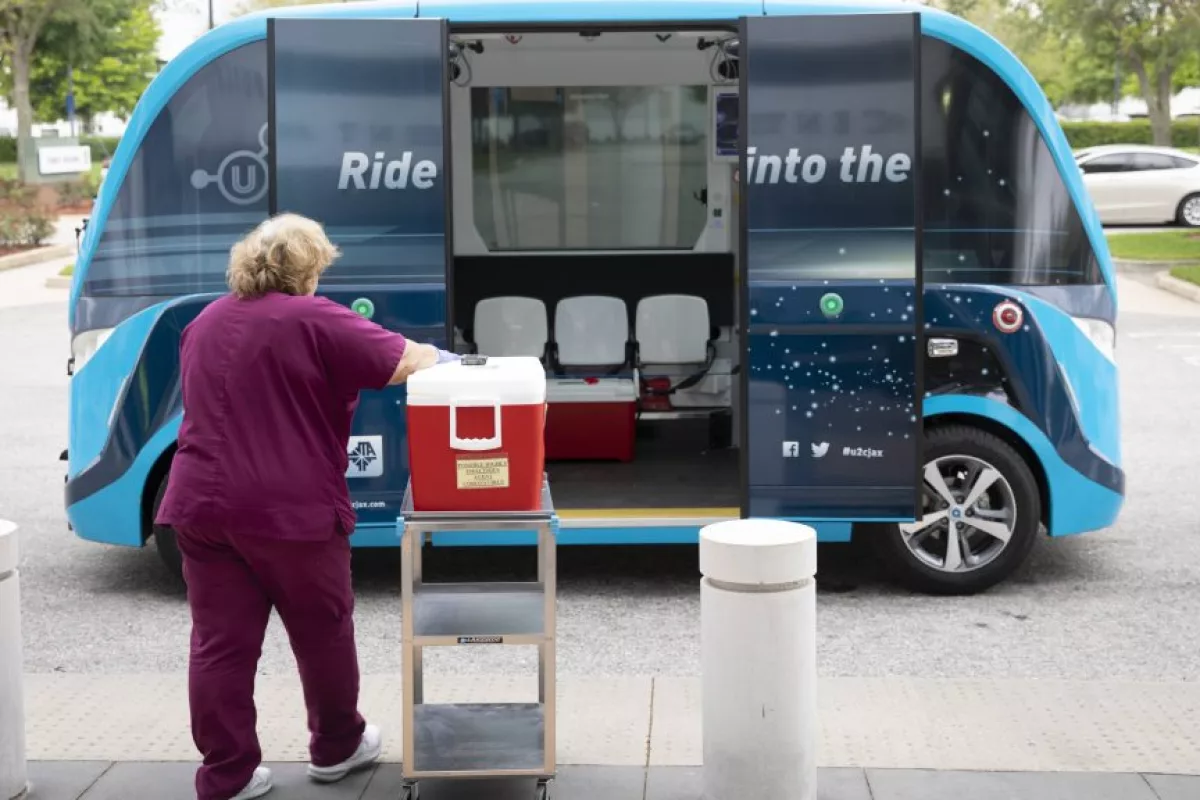The US, like much of the world, is moving to keep contact between its residents to minimum as it grapples with the spread of coronavirus, and a new project taking place at the Mayo Clinic is exploring what this could mean for medical testing. In what is billed as a first for the country, autonomous shuttles are being used to move COVID-19 tests from a drive-through testing checkpoint to a lab for analysis, all without a human on board.
The Mayo Clinic has teamed up with the Jacksonville Transportation Authority and self-driving startups Beep and Nayva for the project. On March 30, four autonomous shuttles began servicing a route between a drive-through testing site and a processing laboratory at the Mayo Clinic's Florida campus.
Once the testing is complete, workers load the samples into a secure container and place them aboard the autonomous shuttle, which then makes its way along a route that is free of pedestrians, traffic and staff. While no human driver is aboard the shuttle, it is escorted by another vehicle that follows behind at a safe distance. The shuttles are also monitored from a central command center to make sure things run smoothly.

In this way, this method is unlikely to be more efficient than simply having a human transport the samples themselves. But at a time when everybody from restaurants offering contact-free delivery options to average citizens practicing social distancing is exploring ways to break potential chains of infection, it is another example of how we might be able to keep humans safe.
"Using artificial intelligence enables us to protect staff from exposure to this contagious virus by using cutting-edge autonomous vehicle technology and frees up staff time that can be dedicated to direct treatment and care for patients,” says Kent Thielen, CEO of Mayo Clinic in Florida. “We are grateful to JTA, Beep and NAVYA for their partnership in these challenging times.”
You can see the autonomous shuttle complete its journey in the video below.
Source: Mayo Clinic





